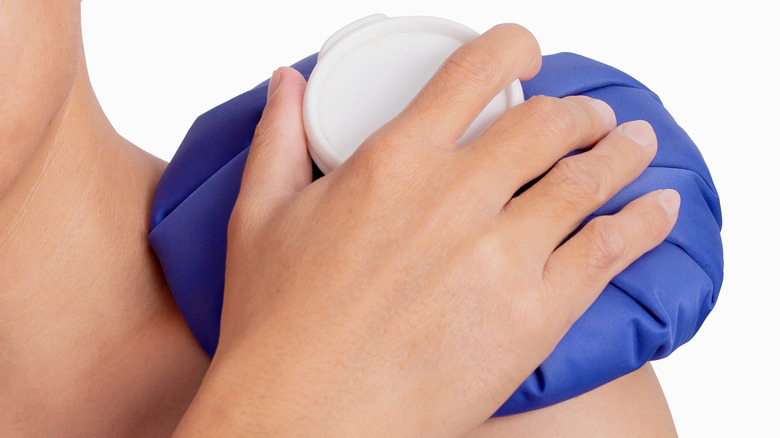The First Thing You Should Do If You've Dislocated A Joint
Dislocated joints are sometimes thought of as injuries that only affect athletes who play contact sports. That's partly true, as they're normally caused when strong force is applied to a joint, pushing the bones out of position. However, it's not just football players and wrestlers who are susceptible. Dislocated joints can happen to anyone as a result of a fall, car accident, or some type of collision, although the risk is higher for those who play contact sports, people who are over 65, or suffer from inherited joint injuries, according to the Cleveland Clinic. While dislocated joints usually occur in the larger joints, like the shoulder, hip, or knee, it's possible to dislocate any joint — even fingers and toes.
Sometimes, a dislocated joint is obvious because the area around the joint is malformed and you can literally see a bulge under the skin where the bone is protruding out of its socket. Other clues that a joint is out of place include sudden pain and swelling, and/or weakness, and a restricted range of motion, according to Tenet Health.
If this happens to you or someone close to you, treat it like a medical emergency and get to your doctor's office or an emergency room ASAP. It's crucial that the injury be quickly treated by a doctor. Waiting to get treatment can make it harder to move the bones back into place. It can also stretch the surrounding tissues, weakening the area and making it more susceptible to repeat injuries.
Applying ice can help reduce pain and inflammation
What can you do while waiting for medical attention? First of all, don't play doctor and try to force the bones back into position yourself. Doing so could actually damage muscles and tissues around the joint and lead to further complications down the road. "You can actually cause more injury this way," Dr. Thomas Youm, an orthopedic surgery specialist, told Men's Health. "You can cause tendon damage, ligament damage or even a fracture trying to pop it back in yourself."
Instead, basic first aid includes immobilizing the injured area with a splint or sling, applying ice, and elevating the joint to reduce pain and swelling while waiting for the doctor, according to the Cleveland Clinic.
Dislocated joints are both common and potentially serious. Getting prompt medical attention, as well as applying some simple first aid techniques, can help minimize damage and help the area heal.


